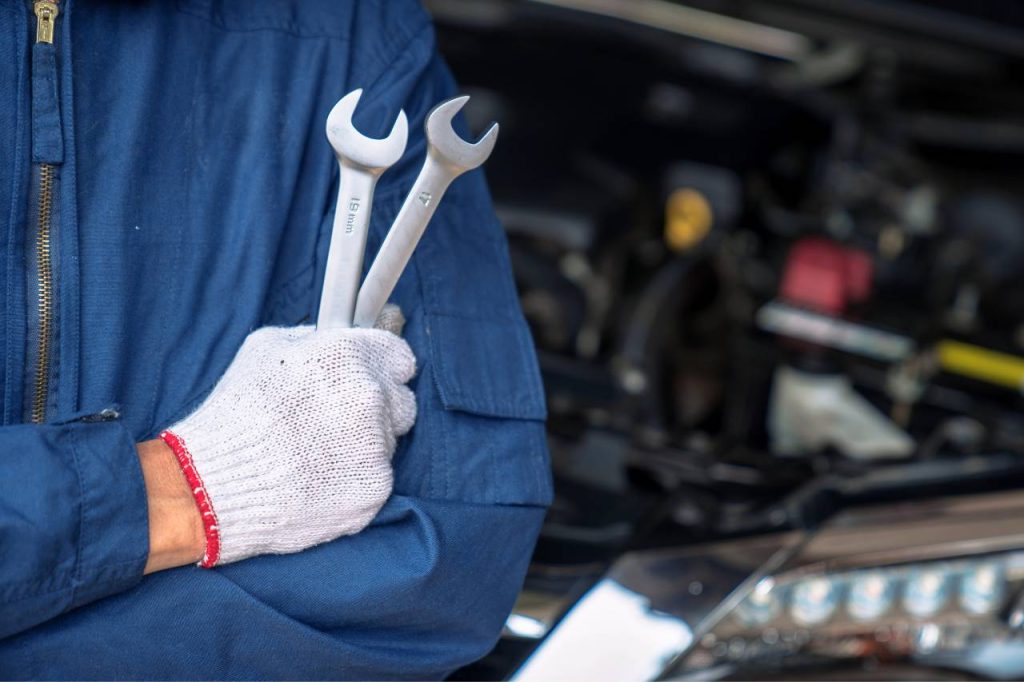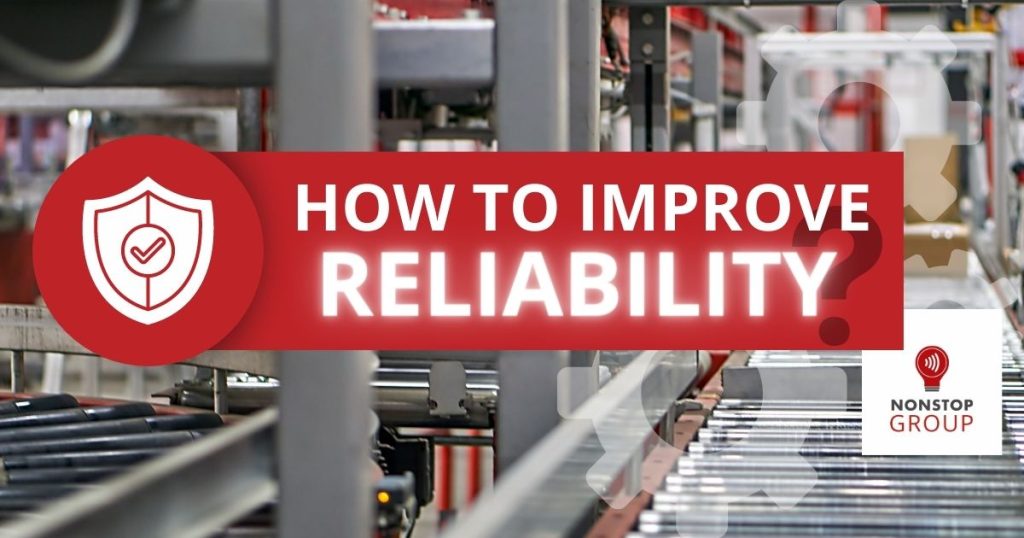6 Min Read

Are equipment failures, unexpected downtime, costly repairs, and loss of production hours all too familiar in your organization? If so, you understand the toll that an unreliable maintenance system can take. It hampers the smooth flow of operations, damages your business’s reputation, and significantly impacts your bottom line.
To combat these costly disruptions, it’s crucial to prioritize equipment reliability as the backbone of your organization. This means implementing a robust maintenance management system within your organization to minimize downtime, reduce costs, and enhance productivity. Ultimately, improve reliability.
Let’s delve into a comprehensive plan that goes beyond surface-level solutions. This article will unveil key strategies and techniques for improving reliability and continually optimizing maintenance. Prepare to discover practical insights that will revolutionize your organization’s approach to maintenance management.
Why Improving and Establishing a Culture of Reliability is Important?
Maintenance and reliability are critical components for the smooth operation of an organization. Without proper maintenance, equipment, and machinery can malfunction, leading to costly downtime, lost production, and even accidents.
To bypass this catastrophe, it is fundamental to continually work towards improving system reliability. Reliability engineering ensures that equipment is available and capable of performing at the expected level. This efficiency is crucial for maintaining customer satisfaction, meeting production targets, and avoiding costly downtime. Furthermore, enhanced production system reliability extends the equipment’s lifespan and efficiency while reducing maintenance and operating costs.
By using strategic maintenance techniques and smart asset management tools like Computerized Maintenance Management Systems (CMMS), organizations can increase equipment reliability, reduce downtime, and improve overall efficiency.
Smarter Asset Tracking With NFC Tags
Learn more about how NonStop Suite's NFC Asset Tracking Solution can help your Enterprise streamline operations to new heights.
Get A Free Product Tour
How To Improve Reliability And Maintenance in 6 Steps?
Maintenance and reliability are crucial factors in the operational success of any asset-intensive organization. Equipment reliability directly impacts the potential for downtime, resulting in lost revenue and production hours.
Investing in maintenance and reliability can pay dividends by ensuring maximum uptime, minimizing costs, and delivering greater customer satisfaction. However, it requires careful planning and strategizing to optimize equipment and facility performance.
To tackle the challenges associated with equipment maintenance and reliability, here is a comprehensive 6-step plan your organization can use and improve equipment reliability and overall operational efficiency.
Step 1: Develop a Maintenance Plan
A comprehensive maintenance plan is crucial for businesses to ensure the longevity and reliability of their equipment. Without a maintenance plan, businesses risk incurring significant costs to unplanned downtime, emergency repairs, and the premature replacement of equipment.
A maintenance plan outlines the equipment to be maintained, the tasks required for maintenance, and the frequency of maintenance. However, creating a strategic maintenance program entails a more extensive undertaking.
The development of a thorough maintenance plan involves a systematic approach that includes various steps:
- Conduct a thorough inventory of equipment and assets.
- Identify the maintenance requirements for each piece of equipment.
- Develop a schedule for routine maintenance tasks.
- Assign responsibilities to individual maintenance personnel or teams.
- Establish a system to track maintenance activities and document procedures.
By following these steps, organizations can implement a maintenance strategy that optimizes system reliability, thereby ensuring uninterrupted operations and significant cost savings.
Step 2: Implement Preventive Maintenance Program
Preventive maintenance (PM) is a proactive maintenance strategy widely implemented in various industries, including manufacturing, petrochemical, transportation, and healthcare. It involves performing regular inspections, cleaning, and minor repairs to prevent potential equipment failures.
Organizations prioritizing preventive maintenance strategies notice benefits like reduced downtime, increased equipment reliability, and improved safety. Moreover, preventive maintenance is also highly cost-efficient, saving between 12% and 18%; each dollar spent on PM saves an average of $5 in the future.
Considering these advantages, it’s no wonder why 88% of manufacturing companies opt for the preventive maintenance approach.
Implementing a preventive maintenance program involves the following steps:
- Identify critical equipment and assets that require preventive maintenance.
- Establish a preventive maintenance schedule based on manufacturer recommendations and historical data.
- Assign responsibilities for performing preventive maintenance tasks.
- Document procedures for preventive maintenance tasks.
- Use technology to track preventive maintenance activities and schedule future tasks.
Step 3: Train Maintenance Personnel and Equipment Operators
Introducing a training program for maintenance and reliability can create an expert team of maintenance personnel in your organization. The program includes classroom instruction, on-the-job training, and a certification process to ensure that maintenance crews remain competent in their roles.
Various types of training programs can be implemented to train maintenance techniques, such as:
- On-the-job training: Involves hands-on training while performing maintenance tasks.
- Classroom training: Involves structured classroom instruction on maintenance techniques.
- Online training: Involves self-paced online courses on performing various maintenance tasks.
Ongoing employee training helps in improving the skills and knowledge of maintenance personnel, resulting in improved equipment reliability and reduced downtime. It also guarantees compliance with safety regulations and can lead to increased employee engagement and job satisfaction.
Step 4: Implement Asset Management Systems for Enhanced Equipment Reliability
Implementing a robust asset maintenance management system can go a long way in improving system reliability!
Asset management systems are software tools that help to manage maintenance activities and track equipment performance. Without a digital asset care and management tool, organizations can face various issues, including server outages, failed third-party integrations, and inefficient backup servers.
By implementing an all-inclusive asset management system can enhance workflow efficiency and accuracy filtering out bad data through error correction algorithms. Ultimately improving equipment reliability, reducing downtime, and improving safety.
Below are the two primary types of asset management systems that you can integrate into your organization:
- Computerized Maintenance Management Systems: CMMS is a software package for managing maintenance operations such as generating work orders, gathering data, preventive maintenance, and inventory management.
- Enterprise Asset Management Systems: EAM is a broader system that covers all aspects of asset management, including asset performance tracking, asset lifecycle management, procurement, disposal, and financial management.
Successfully implementing an asset management system like The NonStop Suite can significantly reduce maintenance costs and unplanned downtime. With real-time data and analytics, maintenance teams can make informed decisions about asset maintenance and repair, leading to better asset performance and reliability.
Additionally, asset management systems can help organizations optimize their maintenance budgets and resources by providing visibility into asset utilization and maintenance history.
Pro Tip: Integrate The NonStop Suite into your maintenance processes. A smart asset management system with a systematic approach to managing critical assets across your entire organization. The NonStop Suite features asset tracking, work order management, inventory control, and maintenance scheduling, making the entire workflow automated, efficient, and streamlined.
Step 5: Establish Key Performance Indicators (KPIs) for Maintenance
Key Performance Indicators (KPIs) are used to measure the effectiveness of maintenance activities and identify opportunities for improvement. By establishing and tracking KPIs, businesses are enabled to make data-driven decisions that improve overall maintenance and reliability performance.
Successful use of KPIs in maintenance and reliability can help organizations in several ways, including:
- Offering a clear and consistent way to measure maintenance performance.
- Enabling continuous improvement by identifying areas for improvement.
- Facilitating communication and collaboration between maintenance teams and other departments.
- Providing a basis for setting targets and monitoring progress towards goals.
Organizations need to select KPIs that align with their goals and objectives, track progress regularly, and make adjustments to ensure optimal performance. Here are the top 3 KPIs that can be used to measure maintenance and reliability performance:
- Mean Time Between Failures (MTBF): This KPI measures the average time between equipment failures. A higher MTBF indicates better equipment reliability.
- Mean Time to Repair (MTTR): This KPI measures the average time period it takes to repair equipment properly after a failure. A lower MTTR indicates more efficient maintenance practices.
- Overall Equipment Effectiveness (OEE): This KPI measures the overall effectiveness of equipment by considering factors such as availability, performance, and quality
Step 6: Conduct Regular Audits of Maintenance Processes
Regular audits are essential to maintaining high levels of maintenance and reliability. Audits provide a way to assess and validate the effectiveness of maintenance programs and identify opportunities for improvement. By conducting regular audits, organizations can ensure that their maintenance processes function as intended, achieving their desired outcomes.
Audits help businesses identify areas of improvement, ensure compliance with industry standards and regulations, and validate the effectiveness of their maintenance programs. There are several types of audits that can be conducted, including compliance audits and performance audits.
Various types of audits can be conducted to evaluate maintenance processes, including the following two:
- Compliance audits ensure maintenance processes comply with industry standards and regulations such as OSHA requirements and ISO standards.
- Performance audits focus on measuring the effectiveness of maintenance processes in achieving their intended outcomes. The main goal is to identify and address potential reliability issues before they lead to downtime or equipment failure.
Successful maintenance audits require a comprehensive understanding of maintenance processes, clear audit objectives, and a commitment to continuous improvement. Organizations need to conduct audits regularly and use the results to make data-driven decisions that improve their maintenance and reliability performance.
Pro Tip: Integrate The NonStop Suite into your organization—an EAM software designed to provide cutting-edge technology and asset management capabilities. With its state-of-the-art digital capabilities, The NonStop Suite enables systematic data gathering and document review, facilitating thorough and effective audits
Conclusion: Improve Reliability and Uptime With The NonStop Suite!
Improving reliability is critical to the success of any business. With a commitment to continuous improvement and a focus on data-driven decision-making, businesses can achieve high levels of maintenance and reliability, improve their bottom line, and position themselves for long-term success.
To streamline this reliability journey, The NonStop Group brings The NonStop Suite!
The NonStop Suite is a comprehensive package of digital solutions designed to simplify, systemize and optimize all facets of asset care and management in your organization.
This cutting-edge solution boasts real-time data collection, analytics and reporting capabilities, empowering organizations to make prompt and data-driven decisions and easily implement corrective measures.
With features like Dynamic eForms, smart NFC tags, and On-The-Go Asset Management, organizations can access real-time monitoring, diagnostics, and reporting capabilities. All of these features translate into benefits like enhanced equipment reliability, reduced downtime and maintenance costs, and improved reliability performance.
Should you want to augment your company’s reliability and maintenance effectiveness, consult The NonStop Suite today and book a free personalized product tour.


